アントシアニンの天然色の有効成分に関する研究
アントシアニン is a type のnatural water-soluble pigment widely found でplants。 It is also のmain coloring substance in plants, giving them colors such as red, blue, or purple。Anthocyanin is a type of polyphenolic compound formed by the anthocyanin base (anthocyanin) being bound to one or more molecules of monosaccharides とdisaccharides via glycosidic bonds。It has physiological functions such as anti-oxidation[1], anti-mutation[2] とprevention of cardiovascular disease[3]. It is a natural active ingredient with great development potential that can be used in health foods, medicine, cosmetics and other fields.
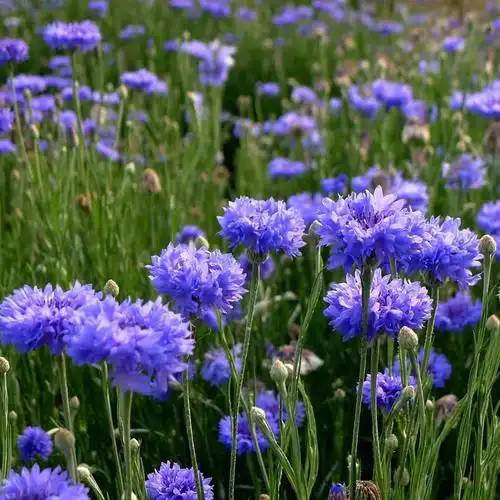
アントシアニンの基本構造は3,5,7 -トリヒドロキシ- 2 -フェニルベンゾピランで、現在20種類以上が知られている。シアニジン(cyanidin)、ペラルゴニジン(pelargonidin)、ピオニジン(peonidin)、マルビジン(malvidin)、ペツニジン(petunidin)、デルフィニジン(delphinidin)は、植物に含まれる6つの最も一般的なアントシアニンである。さらに、アントシアニンの不安定性のため、アントシアニン中のグリコシル基およびヒドロキシル基は、エステル結合により芳香酸や脂肪酸などの1分子以上の有機酸と比較的安定なアシル化アントシアニンを形成することができる[4]。アントシアニン分子に結合している糖と有機酸の種類、量、位置の違いにより、様々なアントシアニンが植物中で形成され、最も一般的なアントシアニンはシアニジン、ゲラニン、デルフィニジン、ピオニジン、マルビニジン、ペツニジン、マロイジンの6種類である。この記事では、食事を通じてアントシアニンを摂取するための基準を提供することを目的として、果物、野菜、ジャガイモ、豆、穀物などの天然アントシアニン源中のアントシアニン成分をレビューします。
1果実に含まれるアントシアニン
Fruits are an important source of natural anthocyanins, including coloured fruits such as grapes, mulberries, blueberries and strawberries.
1. ぶどう1
ブドウは、中国で最も一般的に消費される果物であり、新鮮な状態で食べたり、ワインにしたりすることができます。紫色または赤色の皮を持つブドウは、食物摂取を通じて人体にとってアントシアニンの重要な供給源である。ブドウの皮、果肉、種子などの臓器にはアントシアニンが豊富に含まれている。ブドウには多くの種類のアントシアニンが存在し、品種間に差異があるが、主にデルフィニジン、ペチュニジン、ピオニジン、マルビジンを基基とした誘導体であり、ほとんどのブドウ品種ではマルビジングリコシドが主要なアントシアニン成分である。luan liyingら[5]は、高性能液体クロマトグラフィー質量分析法を用いて、ワイン用ブドウのカベルネ・ソーヴィニヨンと雲南の皮に含まれるアントシアニン成分を分析した73。その結果、カベルネ・ソーヴィニヨンの皮には12種類のアントシアニンが含まれており、国産品種の燕津73からは15種類のアントシアニンが検出された。また、アブシシン酸処理により、2種類の皮膚アントシアニンの総量が有意に増加し、アントシアニンの種類によって含有量が増減することで、果実の発色が促進されることも指摘された。
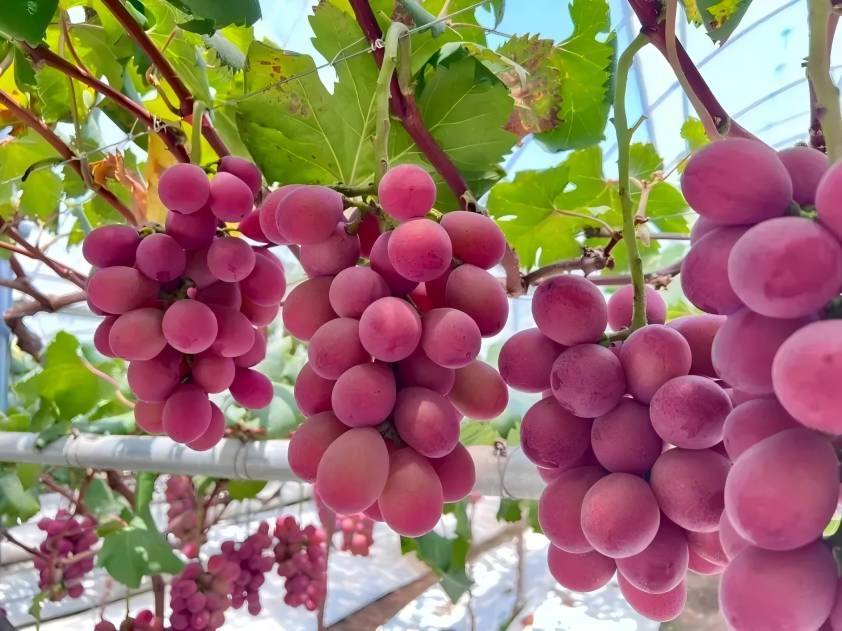
zhang leiら[6]はまた、テーブルブドウ「ビューティーフィンガー」の皮から12種類のアントシアニンが検出されたが、アントシアニンの種類はタバコのものとは異なっていた73。二重の黒い紙袋処理は、皮膚内のアントシアニンの合成と関連遺伝子の発現を大幅に促進し、ブドウの皮膚をよりよく着色できると指摘した。deng jiehongら[7]は、とげのあるブドウの皮からアントシアニンを単離し、検出した。2つのアントシアニン成分、すなわちマルビニジンとピオニジンは、プリックリーブドウの皮アントシアニンの加水分解物から得られ、5つのアントシアニン成分は、3,5- 2糖、1つは3-糖、2つはアシル化アントシアニンである。アントシアニンの種類や含有量もブドウからワインへの発酵中に変化し、一般的に減少傾向を示す。発酵前のカベルネ・ソーヴィニヨンの皮には12種類のアントシアニンが含まれ[5]、発酵ワインにはデルフィニジン3- o-グルコシドとデルフィニジン3- o- (6- o-アセチル)グルコシドを中心とした9種類のアントシアニンが含まれる[8]。
1. 2ブルーベリー
Blueberry anthocyanins are mainly based on delphinidin, cyanidin and petunidin structures, with galactose, glucose and arabinose glycosides bound at different sites. Liu Zhigang et アル[9] identified 13 anthocyanins in the anthocyanin 抽出of Guizhou blueberries and predicted that it contains cornflower 3-O-glucoside, delphinidin 3-galactoside, delphinidin 3-arabinoside, Petunidin 3-arabinoside, Malvinidin 3-galactoside, Malvinidin 3-glucoside and Malvinidin 3-arabinoside. Liu Yong et アル[10] found 12 Anthocyanins in the Anthocyanin extract of Nanjing blueberries.
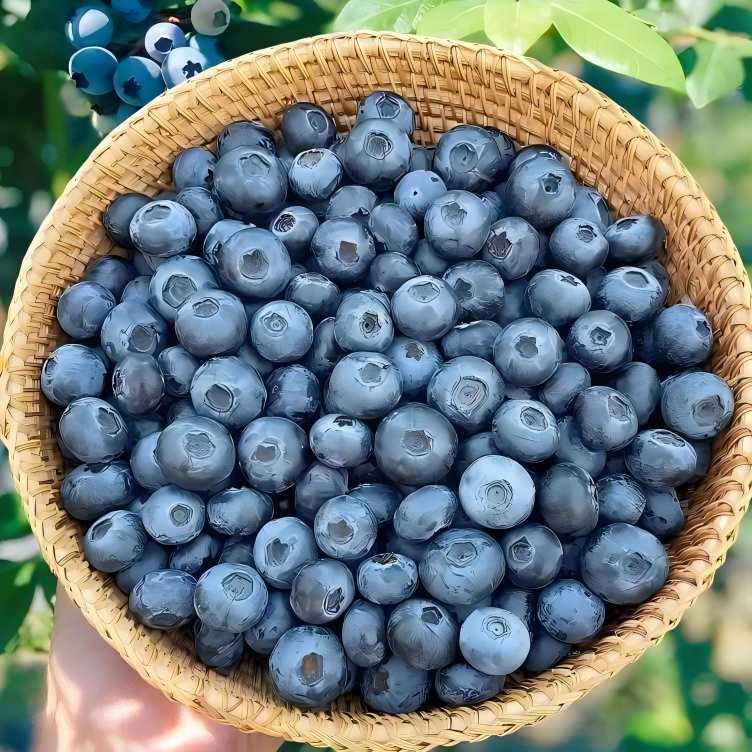
1. 3桑
桑のアントシアニンは、主にシアニジンとペラルゴニジンの誘導体であり、品種間に違いがあります。zou tangbinら[11]は、広州の桑から8種類のアントシアニンを発見した。主にシアニジン、デルフィニジン、ペラゴニジンなどの塩基とグルコース、ルチノシドが結合したものである。などの4種のdelphinidin派生商品delphinidin 3 (2G-glucorhamnoside) delphinidin-3、5-diglucoside、delphinidin-3-glucoside delphinidin-3-rutinoside、delphinidin-3-rutinoside、delphinidin-3-glucoside、2 delphinidin派生商品は、つまりpelargonidin-3-rutinosideとpelargonidin-3-glucoside、2 geraninデリバティブとかすなわちgeranin-3-glucoside geranin-3-rutinosideがはっきりしている。yang lingら[12]によると、xinjiang medlar anthocyaninにはデルフィニジン誘導体は含まれておらず、トウモロコシの花-3-ルチノシド、ペラルゴニウム-3-ルチノシド、およびトウモロコシの花-3-グルコシドおよびゼラニウム-3-グルコシドのような他の4つのアントシアニン成分のみが含まれている。新疆ウイグル自治区の桑と比較して、安徽省野生の桑は、アントシアニン成分が3つしかなく、ゼラニウム- 3 -ルチノシドを欠いています[13]。
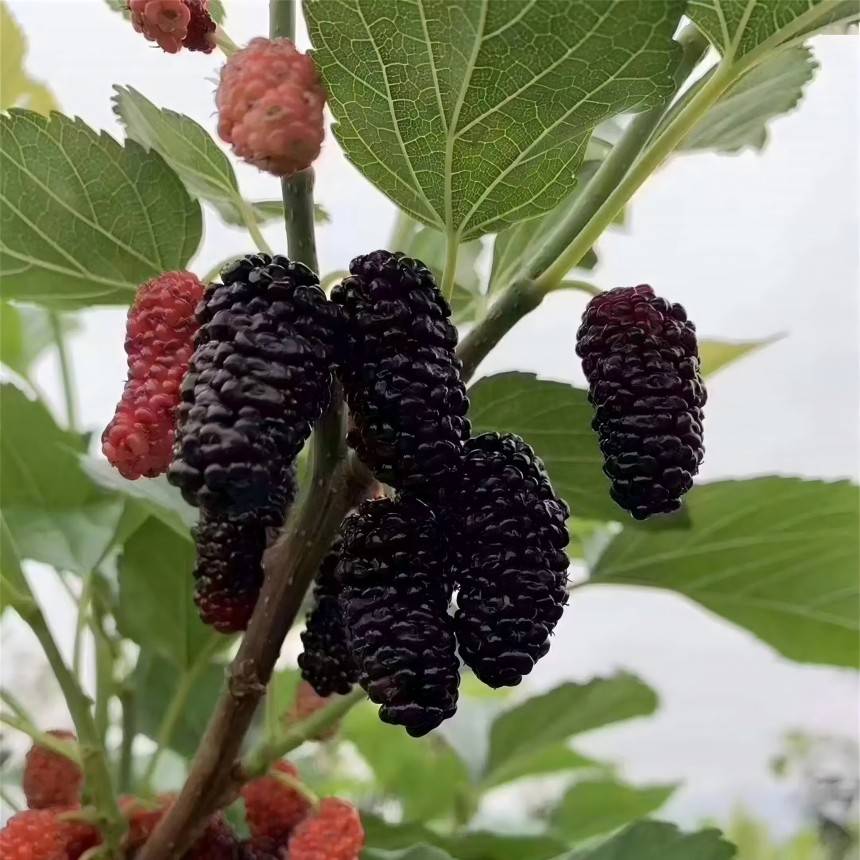
1. 4名
イチゴの果実には9種類ほどのアントシアニンが含まれていますが、アントシアニンの種類や含有量、割合は品種によって異なります。これらのうち、主なアントシアニンの構成要素であるデルフィニジン-3-グルコシドが、続いてデルフィニジン-3-ルチノシド、デルフィニジン-3-グルコピラノシルプロピオン酸、シアニジン-3-グルコシド、およびデルフィニジン-3-メチルグルコピラノシドが続く[14]。樟脳の果実中のアントシアニンの主な成分は、paeoniflorin 3-arabinoside、paeoniflorin 3-xyloside、およびpaeoniflorin 3-glucosideまたはそれらの誘導体である[15]。
2野菜中のアントシアニン成分
野菜はまた、天然のアントシアニンの主要な供給源である。赤葉マスタード、紫キャベツ、赤キャベツ、紫キャベツ、紫芽キャベツの新葉に含まれるアントシアニンは、主にシアニジン、ペトゥニジン、デルフィニジンの誘導体である。赤葉マスタード、紫白菜、紫朴菜、赤savoyキャベツに含まれるアントシアニンは、主にデルフィニジン-3-グルコシドをクーマル酸、マロン酸、フェルル酸でアシル化したものである。主な紫匂アントシアニンキャベツはacylated delphinidin-3-gentiobioside、红叶主要アントシアニンマスタード、紫キャベツ白紫崔とレッドsavoy白菜はacylated delphinidin-3-gentiobioside-5-glucosideとunacylated delphinidin-3-rutinoside-5-glucoside、cornflower-3-p-coumaroyl-sophoroside-5-glucoside[16]。紫キャベツには15個のアントシアニンが含まれており、主に9個の高アシル化コーンフラワーアントシアニンと2個の非アシル化単糖および2糖のコーンフラワー、少量の非アシル化単糖および2糖のデルフィニジンから構成されている[17]。赤皮ダイコンには4つの主要なアントシアニンがあり、いずれもペラルゴニジン-3-ルチノシド-5-グルコシドを基本構造としている。ポケット各3 - [6 - (p-coumaroyl) -L-glucopyranosyl(2→1)-glucoside] -5-D-glucopyranosyl geranin、3 [6 - (feruloyl) -L-glucopyranosyl(2→1)-glucoside] -5-D-glucopyranosyl配糖体pelargonidinと、3 [6 - (p-coumaroyl) -L-glucopyranosyl(2→1)-glucoside] 5 - [(6-malonyl) -D-glucopyranoside] pelargonidinと3 [6 - (feruloyl) -L-glucosyl(2→1)-glucoside] 5[-](6両、propionyl) -D-glucopyranoside] pelargonidin[18]。
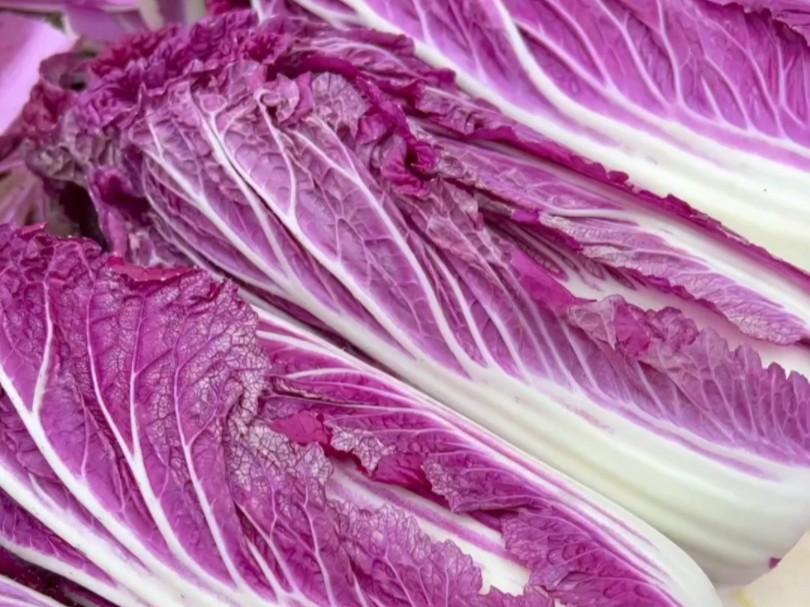
3塊茎中のアントシアニン成分
Potatoes are a common food crop and a major source of natural anthocyanins. Sun Mengru et al. [19] used liquid chromatography-mass spectrometry to determine the anthocyanin components in the salt-tolerant purple 甘いジャガイモvariety Z103. They found that it contained 12 anthocyanins, mainly cyanidin and peonidin anthocyanins acylated with aromatic acids [20]. Zhang Chao et al. [21] identified the anthocyanin components in two types of colored potatoes in China, including red potatoes (2472) and purple potatoes (purple sweet potatoes). The results showed that red potatoes (2472) contain five types of anthocyanins, mainly unacylated pelargonidin glycosides and acylated pelargonidin glycosides and cyanidin 3-p-coumaroyl-rutinoside-5-glucoside, and the detection of cyanidin 3-p-coumaroyl-rutinoside-5-glucoside in potatoes for the first time. Purple potatoes (purple sweet potatoes) also contain five anthocyanins, mainly unacetylated petunidin and acetylated petunidin and malvinidin, of which petunidin-3-p-coumaroyl-rutinoside-5-glucoside is the main component. The purple potato “Black Diamond” contains seven anthocyanin components, mainly unacetylated petunidin, peonidin and acetylated delphinidin, petunidin and peonidin. Among them, petunidin-3-p-coumaroyl-rutinoside-5-glucoside is the main component of purple potato anthocyanin, and petunidin-3-glucoside was detected for the first time in potatoes [22-23].
アントシアニンの他の4つの天然源
黒米の種皮にはポリフェノール、特にアントシアニンが豊富に含まれている。これは主に3つのアントシアニン成分を含んでいます:コーンフラワー-3-グルコシド、コーンフラワー-3-ルチノシドおよびパエニフロリン-3-グルコシド[24]。合計14たアントシアニン化合物が認められ用の青紫,全粒小麦パンの穀物delphinidinなどcyanidin、牡丹の形のアントシアニン- hexosideやdelphinidin-3-O-glucoside cyanidin-3-O-rutinosideやacetylated cyanidin-3-O-glucoside -歴史で形成され、delphinidin cyanidin、petunidin、peonidin、水溶性植物。[25]。紫トウモロコシの殻には6つのアントシアニン成分が含まれており、おそらくコーンフラワー-3- o-グルコシド、ゲラニウム-3- o-グルコシド、ペエオニフロリン-3- o-グルコシド、コーンフラワー-3-(6-マロニル-グルコシド)、ペラルゴニウム-3-(6-マロニル-グルコシド)、ペエオニフロリン-3-(6-マロニル-グルコシド)を含む[26]。デルフィニジン-3-グルコシド、シアニジン-3-ガラクトシド、シアニジン-3-グルコシド、ペツニジン-3-グルコシド、ピオニジン-3-グルコシド、マルビニジン-3-グルコシドである[27]。
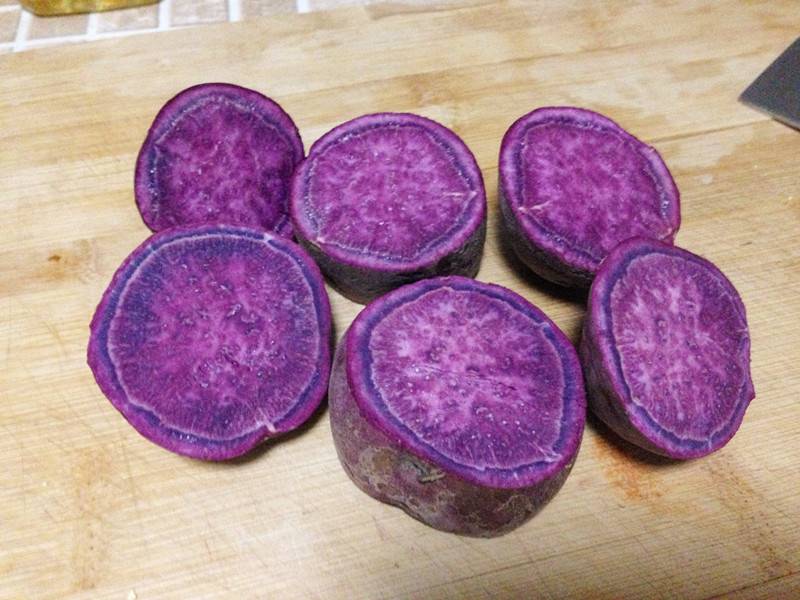
5結論
としてcoloring substance in plants, anthocyanin not only imparts color, but also has various physiological functions such as anti-oxidation, anti-cancer, and prevention of cardiovascular and cerebrovascular diseases. It has extremely high value as both medicine and food, and the development and use of natural plant extracts is highly safe. Therefore, anthocyanin resources have a wider scope and prospects for development in the field of natural color development. However, anthocyanin content is generally low in crops. Bioengineering methods can be used to enrich crops with anthocyanin, such as silencing the expression of 関連inhibitory genes in the metabolic process of anthocyanin synthesis through gene silencing technology (such as RNAi silencing), or transferring relevant anthocyanin genes through transgenic technology and conducting breeding.
参考:
[1]ユング S B、申 J H、金 J Y et al. shinzami korean purple -fleshed sweet potato extract 防ぐ ischaemia -再灌流誘発 肝臓 ダメージ in ネズミ か[J] . 誌 の 科学 食品 and 2017年(平成29年)4月1日:ダイヤ改正。
[2] Bobe G、王 B Seeram N P et al. 食物 アントシアニンを豊富に含むタルトチェリーエキスは、apc (min)マウスの腸内腫瘍形成を阻害します 供給 最適以下 レベル sulin - dac [J] 。農業・食品化学,2006,54(25):9 322-9 328。
[3] Krga I, Monfoulet L E, Konic -Ristic 一、たち al. Antho - cyanins and を 腸 老廃物 減らす the 癒着 単球からtnfα活性化内皮細胞のphysi-学的に relevant 濃度 か[J] . 文書 of 生物化学・生物物理学,2016(1):236-243。
[4]李Yingchang。植物アントシアニン[m]。北京:化学工業出版社、2013年10月。
[5] luan liying, zhang zhenwen, hui zhumei, et al。カベルネ・ソーヴィニヨンのアントシアニン組成に対するアブシジン酸処理の影響と73種のブドウ皮の煙[j]。 ^『官報』第1418号、大正11年(1840年)10月1日。
[6] zhang lei, jia yue, wang jiyuan, et al。beauty fingerブドウのアントシアニン組成および合成関連遺伝子発現に対するバギングの影響[j]。journal of fruit science, 2014(6): 1032-1039。
[7] deng jiehong, tan xinghe, wang feng, et al。ぶどうの皮からのアントシアニンの単離と同定[j]。中国食品科学誌,2010(1):200-206。
【8】王華、韓富良。hplcを用いたカベルネ・ソーヴィニヨン辛口赤ワイン中のアントシアニン成分の分析[j]。^「science and technology」。winemaking science and technology, 2005(4): 81-84. 2009年8月8日閲覧。
[9] liu zhigang, liu xiaoyan, du chao, et al。ブルーベリーアントシアニン抽出物のhplcフィンガープリント[j]。 中国実験薬理学会誌,2015(21):58-61。
[10] liu yong, wang ping, wu yue, et al。超音波による抽出プロセスの最適化とブルーベリーアントシアニンの成分分析[j]。安徽科学技術大学紀要,2014(3):32-36。
【11】鄒tangbin, ling wenhua。アントシアニン含有量の決定と桑の種類の分析[j]。2013年(平成25年)4月1日-2号機が完成。
[12] yang ling, su yali, chen min .新疆ウイグル自治区桑のアントシアニンの分離と同定[j]。^ a b c d e f g h i(2012)、145-148頁。
【13】陳亮、新秀蘭、袁奇鵬。野生桑のアントシアニン成分の解析[j]。食品業界科学技術2012年(15):307-310。
[14] luo yun, chen zongling, song weitang, et al。イチゴ果実中のアントシアニン成分の同定と分析[j]。中国農業大学ジャーナル2014(5):86-94。
【15】楚延良、王娜。クスノキの果実におけるアントシアニン成分の同定と抗菌・防腐研究[j]。安徽農業科学、2010(20):10 907-10 909。
[16] zhang shujiang, ma yue, xu xueling, et al。アブラナ属5種の赤紫色野菜のアントシアニン含有量と成分分析[j]。the journal of horticulture, 2014(7): 1451-1460。
[17] kuang minjie, qi minyu, he jingren, et al。紫キャベツ中のアントシアニン成分の同定、およびその安定性および抗酸化特性[j]。中国の農業科学,2014(20):4067-4077。
【18位】李平範、姚永芳大根のアントシアニンの構造研究[j]。^ a b c de f g h『科学技術史』第4巻、2014年、40-43頁。
[19] sun mengru, sun yun, yao zhong, et al。耐塩性紫芋アントシアニンの抽出と成分分析[j]。^ a b c d e f g h i『食品と発酵産業』2010年10月号、208-213頁。
[20] wang xirui, zhang chao, ma yue, et al。サツマイモ中のアントシアニンの含有量および組成に対する加工法の影響[j]。 中国食品科学雑誌,2011(8):191- 196。
[21] zhang chao, ma yue, zhao xiaoyan, et al。高性能液体クロマトグラフィー質量分析法による紫芋のアントシアニン組成の決定[j]。食品業界科学技術2011年(7):417-419。
[22] yang zhiyong, li xinsheng, ma jiaoyan, et al。紫芋「黒キングコング」のアントシアニン成分と含有量の分析[j]。2013年食物科学専攻(14):271-275。
[23] xu j, su x, lim s, et al。紫肉質サツマイモにおけるアントシアニンの特性と安定性p40 [j]。2015年食品化学、186:90-96。
[24] zhang fangxuan, zhang mingwei, zhang ruifen, et al。黒米種皮中のアントシアニン組成と含量のhplc分析[j]。中国の穀物,油と食料,2010(12):122-125。
[25] zhao shancang, liu bin, zhao lingyuan, et al。青・紫粒状小麦におけるアントシアニン組成の解析[j]。中国の農業科学,2010(19):4072-4080。
[26] wang dan, ma yue, zhang chao, et al。紫トウモロコシの殻に含まれるアントシアニンの精製、同定および熱安定性分析[j]。^ a b c d e f g h i『日本の食文化と食文化』、2013年、77-80頁。
[27] zhang fangxuan, zhang mingwei, zhang ruifen, et al。アントシアニンの成分と抗酸化活性の分析[j]。中国農業学会誌,2010(24):5 088-5 099。


 英語
英語 フランス
フランス スペイン
スペイン ロシア
ロシア 韓国
韓国 日本
日本



